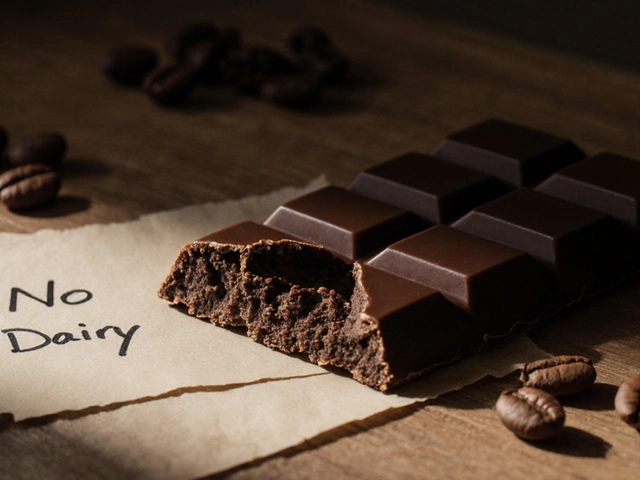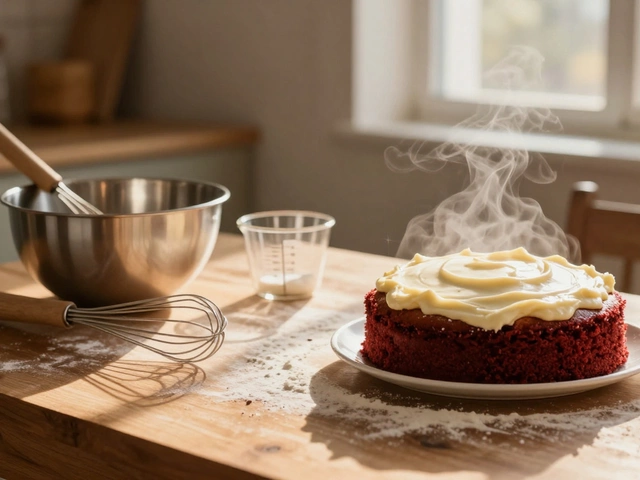Easy Homemade Fudge: Quick, Creamy Recipes You Can Make Tonight
Fudge feels fancy, but you don’t need a candy‑making degree to get it right. All you need is sugar, butter, milk, and a little patience. Follow these straightforward tips and you’ll have a batch of silky sweet that looks store‑bought.
The Basics of Perfect Fudge
First thing: temperature matters. Aim for the soft‑ball stage – that’s roughly 235°F to 240°F (112°C to 115°C). A candy thermometer makes it easy, but if you don’t have one, watch the edges of the mixture. When you dip a spoon in and pull it out, the syrup should form a soft ball that flattens slowly.
Stirring is another key point. Once the mixture hits the right heat, turn off the heat and let it sit for a minute. Then start beating it with a wooden spoon or electric mixer. This incorporates air, giving you that classic fudge texture. Too much stirring can make it grainy, so stop once it looks glossy and thick.
Don’t forget the butter. A good tablespoon of butter adds richness and helps the fudge stay smooth. If you’re cutting calories, you can swap half the butter for coconut oil, but keep the total fat amount the same so the texture stays right.
Quick Easy Fudge Recipes
Classic Chocolate Fudge: Combine 2 cups granulated sugar, 1/2 cup butter, 2/3 cup evaporated milk, and 1/4 cup cocoa powder. Heat to soft‑ball stage, then add 1 tsp vanilla and 2 cups chocolate chips. Beat until thick, pour into a greased pan, and chill.
Peanut Butter Fudge: Use the same base but swap cocoa for 1/2 cup creamy peanut butter and add a pinch of sea salt. The salty‑sweet combo is a crowd‑pleaser, and you can toss in chopped peanuts for crunch.
Maple Walnut Fudge: Replace vanilla with 2 tbsp pure maple syrup and stir in 1 cup toasted walnuts right before the final beat. The maple adds depth without overwhelming the butter’s richness.
All three recipes need the same temperature check, so keep that thermometer handy. If you’re at high altitude, raise the temperature by about 5°F; the water evaporates faster up there.
Once the fudge sets, cut it into squares with a hot knife. Running the knife under hot water for a few seconds prevents sticking and gives clean edges.
Store your fudge in an airtight container at room temperature for up to two weeks. For longer storage, freeze in a zip‑top bag; it stays fresh for three months. Thaw in the fridge before serving to keep the texture consistent.
Got leftovers? Crumble it over ice cream, blend into milkshakes, or melt it for a quick sauce on pancakes. Fudge is versatile, and a little goes a long way.
Now you have the basics, the temperature tip, and three fool‑proof recipes. Grab a pan, heat up, and enjoy your own easy homemade fudge tonight. No fancy equipment, just simple steps and delicious results.

3 Ingredient Fudge Not Setting? Here’s What’s Going Wrong
Wondering why your 3 ingredient fudge refuses to set? This article breaks down the top reasons for runny or soft fudge and how to fix it. Learn about the roles of each ingredient, typical mistakes, and simple tweaks to get perfect fudge every time. Get practical advice you can use today. Stop stressing about failed batches and discover how to turn fudge flops into rich, sliceable treats.
View More




